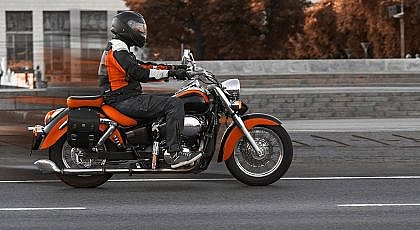The Perfect Ride: Top Tips For Navigating Used Motorcycle Listings

Finding your dream motorcycle in the sea of used listings can feel overwhelming. But with the right approach, you’ll spot quality bikes and avoid costly mistakes. Let’s break down how to navigate the used motorcycle market like a pro.
Know Your Budget Before You Browse
When perusing through the various used motorcycle listings, set a realistic budget that includes more than just the purchase price. Factor in insurance, registration, gear, and potential repairs. A good rule of thumb is to budget an extra 20% on top of the bike’s price for unexpected expenses. This buffer will save you from buyer’s remorse later.
Don’t forget about financing options if you’re not paying cash. Credit unions often offer better rates than dealerships, so shop around before committing.
See also: Balancing Family Life and Owning a Business
Research Models and Years to Target
Not all motorcycle years are created equal. Some model years have known issues while others are bulletproof. Spend time on motorcycle forums and review sites to understand which years to seek out and which to avoid.
Popular beginner bikes, like the Kawasaki Ninja 300 or Honda CB500F, tend to hold their value well. Sport tourers and cruisers often depreciate faster, which can work in your favor as a buyer.
Decode the Listing Language
Sellers have their own vocabulary, and learning to read between the lines is crucial. “Garage kept” usually means well-maintained. “Runs great,” without mention of maintenance history, is a red flag. “Needs TLC” often translates to “needs expensive repairs.”
Look for listings with detailed maintenance records and multiple clear photos. Sellers who provide service history and are transparent about issues are typically more trustworthy.
What to Look For in Photos
Good photos tell a story about how the bike was cared for. Check for:
- Clean engine cases and no oil leaks
- Even tire wear patterns
- Straight handlebars and footpegs
- Clean chain and sprockets
- Original parts versus aftermarket modifications
Blurry photos or shots that don’t show key areas like the instrument cluster, engine, and tires should raise suspicion. If the seller can’t provide clear photos of specific areas you request, move on.
Questions to Ask Before Viewing
Smart questions can save you a wasted trip. Ask about the bike’s history, including any accidents or drops. Find out when the last service was performed and what maintenance is coming due.
Ask if the title is clear and in the seller’s name. Liens or title issues can complicate the purchase process significantly. Also, inquire about any modifications made to the bike, as these can affect reliability and insurance costs.
The Test Ride Strategy
Never buy without riding, but be smart about it. Meet in a public place and bring a friend if possible. Start the bike cold to check for starting issues. Listen for unusual noises and feel for vibrations that could indicate problems.
Check that the brakes feel firm and the clutch engages smoothly. Test the electrical systems, including lights, turn signals, and horn. A short 10-15 minute ride is usually enough to identify major issues.
Negotiation and Final Steps
Come prepared with research on similar bikes in your area. Use any discovered issues as negotiation points, but be reasonable in your approach. Most sellers expect some haggling, but lowball offers will end conversations quickly. Once you agree on the price, arrange for immediate payment and title transfer. Cash talks, but certified checks work too. Don’t hand over money until you have the title and keys in hand.
Remember, the perfect bike for you might not be the newest or flashiest one available. Sometimes the best deals come from patient sellers who’ve maintained their bikes well and are honest about their condition.





